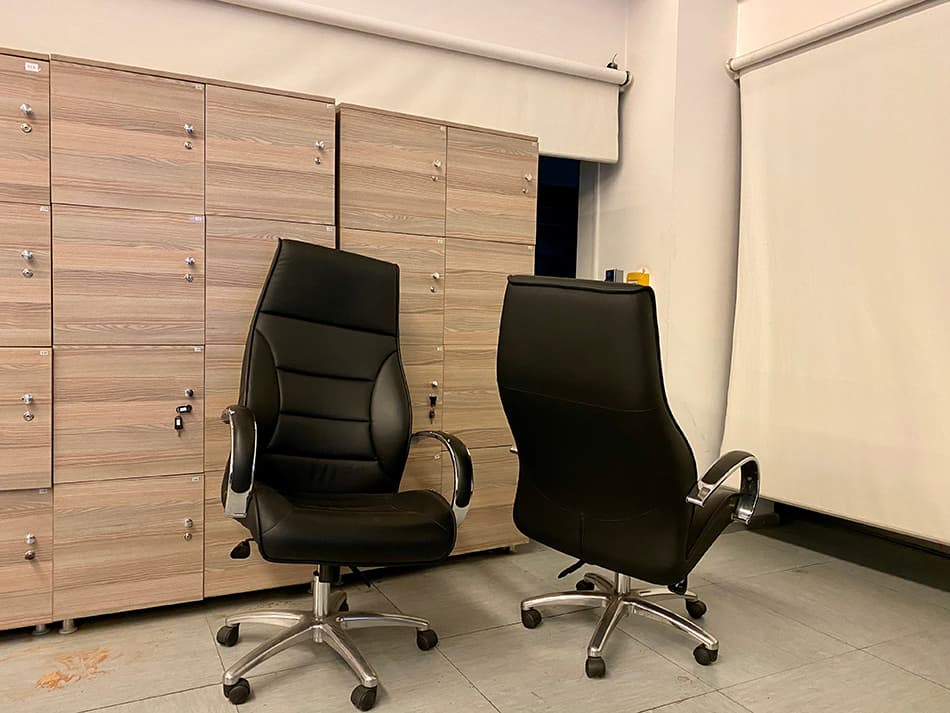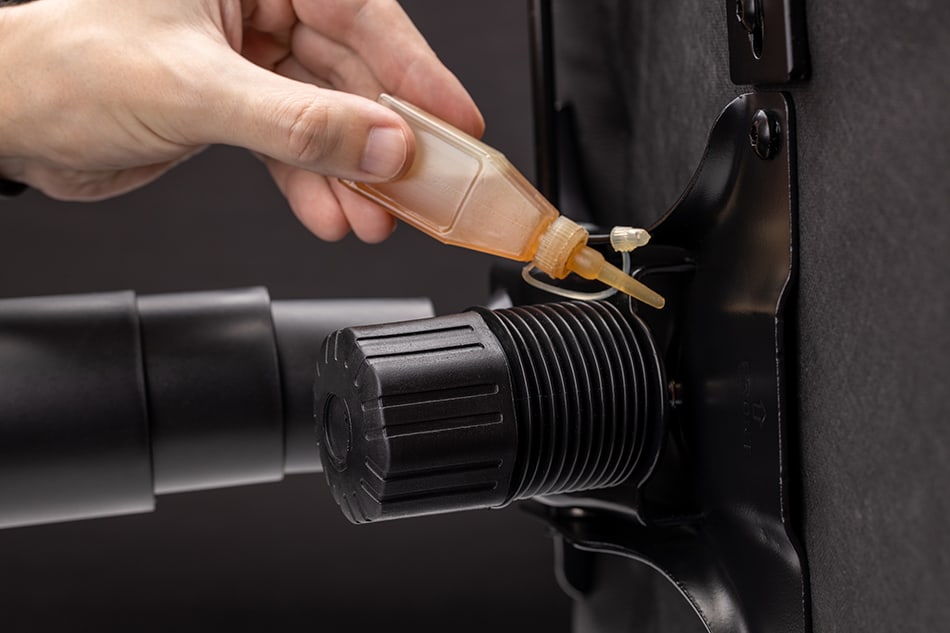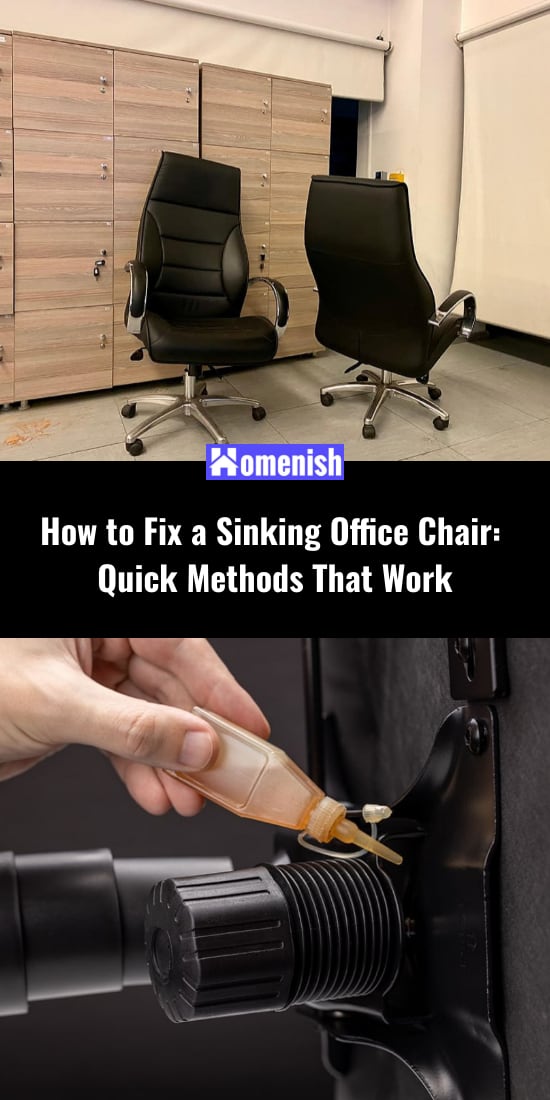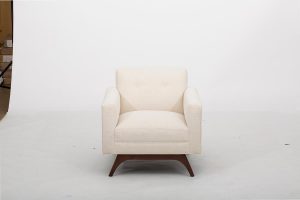Isn’t it annoying when you sit on your office chair and suddenly it sinks? A good-quality office chair can last for years. But once it starts showing the signs of wear and tear, it’s time to do something about it.
Most people think that a sinking office chair is because of the loose seat or compressed cushion, but that’s rarely the cause. While you can always replace your old office chair, it can be quite expensive, especially if it’s a leather chair. Fortunately, there are some quick DIY tips that will save you from forking out on a new chair.
Before we go through all the easy methods you can try, let’s first determine the possible causes of a sinking office chair.
Some Common Reasons Behind Sinking Office Chair
To begin with, you should first understand the main technologies used in height adjustable office chairs: hydraulic and pneumatic. These mediums make the core function of a chair work as both applications use fluid power.
Hydraulic and pneumatic technologies aren’t just used in office chairs. They are also incorporated into heavy machinery. The pneumatic system uses compressible air or gases, while the hydraulic system uses oil in its application.
With hydraulic systems, the machinery or chair is capable of moving heavier loads with greater force. Most height-adjustable chairs nowadays feature pneumatic rather than hydraulic systems as they don’t need to move heavy loads. Furthermore, the chances of fluid leaks from pneumatic chairs are minimal, thus making them safer to store and use.
One of the most common reasons for a sinking office chair is the problem with the hydraulic components or adjustable cylinders. Since such chairs come with a pneumatic cylinder or piston, these parts can become faulty over time. The malfunction of your chair’s pneumatic operation is mainly due to wear and tear or other issues. However, no matter what the cause is, it must be fixed immediately.
If you want to avoid spending a considerable amount of money on buying a new chair, there are simple DIY solutions that will fix the problem. Let’s take a closer look at all the different methods of repairing your sinking office chair.
How to Fix a Sinking Office Chair
Oil the Mechanical Parts
First and foremost, check for any friction while you’re sitting on the chair. If you feel any type of friction through the chair’s lever, all that’s needed is some lubricant. This may be the cause behind the sinking chair. Simply oil the joints of your chair using WD40.
Apply the oil to all the bolts, screws, and nuts underneath the chair to help loosen the joints. This can be done by spraying the WD40 directly on the mechanisms before patting them dry. Alternatively, you may spray the oil on a cloth and rub it onto the mechanisms.
Use a PVC Pipe
In most cases, an office chair’s cylinder malfunctions because of its defective seals, thus causing the sinking. The failing seals lack the necessary pressure to keep the seat at a certain height.
Replacing the chair’s cylinder will solve the problem – but it will be costly. The cheapest way is to repair the cylinder with a PVC pipe by following these steps:
What you’ll need:
- A PVC water pipe
- A rubber mallet
- Measuring tape
- A wrench or screwdriver
- A cutting tool
Step 1. The first step is to remove the seat from the base. To do this, you’ll need a screwdriver or wrench. Place the chair upside down and begin loosening the screws. Now use a rubber mallet to remove the seat by gently hitting the attached metal part.
Step 2. Next, you must cut the PVC water pipe. But before you start cutting the pipe, make sure you wear protective gear like safety glasses and gloves. Measure the pipe’s length and cut it using your cutting tool. Be sure to secure the pipe correctly in order to prevent any uneven edges.
Step 3. Now it’s time to fit the PVC pipe by attaching it to the extendable cylinder. You must measure the cylinder’s width, length and circumference for the most accurate pipe length. The diameter can be the same or a little larger than the cylinder.
The best way to cut the pipe before fitting it is by starting from one end using a hacksaw. This will make it easier for sliding the pipe on the cylinder. Alternatively, you may just remove the wheelbase and slide the pipe without cutting it.
To insert the strut, push the pipe on the cylinder and make sure you don’t leave any gaps between the cylinder’s housing and the strut. The pipe fit must be snug, not too loose and not too tight.
Now test the chair for sturdiness. It should stop sinking now. If not, add or remove the pipe’s length for better height adjustment.
Try the Hose Clamp Method
What you’ll need:
- A hose clamp
- Screwdriver
- Jubilee clip
- Duct tape
Step 1. Start by sliding the plastic skirt off the chair’s cylinder. In case you’re not sure what the cylinder part of the chair looks like, this is the metal pipe that connects the wheelbase to the seat. Most office chairs feature a plastic tube over the cylinder to protect the mechanism from dirt or damage. Slide the tube until the cylinder underneath is exposed.
Step 2. Now it’s time to adjust the chair to your desired height. The hose clamp method will give permanent results as long as you check the desired height beforehand. So make sure you have determined the right height as it can’t be changed afterwards.
As a rule of thumb, the seat of the chair should be at the same level as your knees when you’re standing. This ensures you’ll be fully comfortable even after sitting on the chair for long periods.
You may be wondering how to adjust the chair to your preferred height. If the chair isn’t steady after sliding it up, lay the item on its side before pushing it to your desired height.
Another way to adjust the height is through the cylinder. If the plastic skirt has covered this component, remove the skirt by turning the chair upside down. You will then be able to push the retaining clip at the wheelbase using a screwdriver much like the previous method.
Once you’ve adjusted the chair to your preferred height, slide the wheels back on.
Step 3. To wrap a 2cm hose clamp around the chair’s cylinder, use a jubilee clip.
When applying the hose clamp, loosen the screw and gently pull out the belt end. Wrap it around the cylinder but don’t tighten the clamp just yet.
Step 4. After wrapping the hose clamp around the metal cylinder, you’ll need to make sure it fits snugly before tightening it. Once you’re certain that the clamp is stable enough, tighten the grip.
Since the hose clamp will be holding your entire weight, you’ll want to ensure it is as tight as possible around the metal cylinder.
For a professional look, wipe off any grease or dirt from the cylinder before wrapping it with duct tape.
Remove and Replace the Pneumatic Cylinder
Another solution to a sinking office chair is to replace the pneumatic cylinder itself as it does tend to wear out over time. When replacing this component, be sure to follow the manufacturer’s direction or contact a professional.
Replacing the pneumatic cylinder or spring is actually the easy part. Removing it is difficult as there are different ways of attaching these cylinders to chairs. It can be a labor-intensive or risky task. After all, the cylinder contains pressurized air or gas, which can cause it to release violently in the air or in your face! This is why we recommend that you take the chair to an authorized dealer to remove and replace the cylinder for you.
Alternatively, Use a Ready-Made Kit
If you don’t want to use any of our suggested methods, you can always buy a ready-made kit to repair your office chair. To fit the C-shaped spacers underneath the chair, raise the chair to its maximum position before attaching the plastic spacer on the cylinder skirt.
Place one spacer at a time until they fully grip the seat at knee level when standing. To test the chair, sit on it and start bonding the spacers to finish off.
Conclusion
The above inexpensive and quick fix methods should help you solve the sinking problem of your office chair. Remember to first check the chair’s external mechanism to see whether it needs oiling or cleaning. If the issue isn’t the cylinder, then try all our suggestions to see if the chair will still sink or not. The PVC pipe and hose clamp methods can be done by yourself, but if the task proves to be complicated, just take the chair to a specialist.








